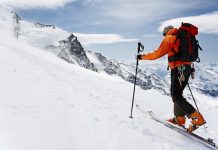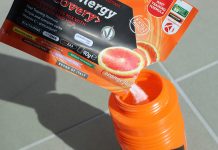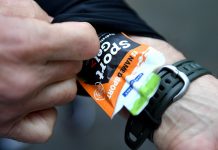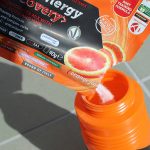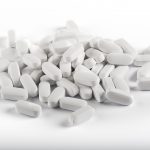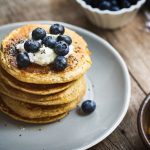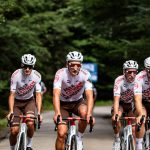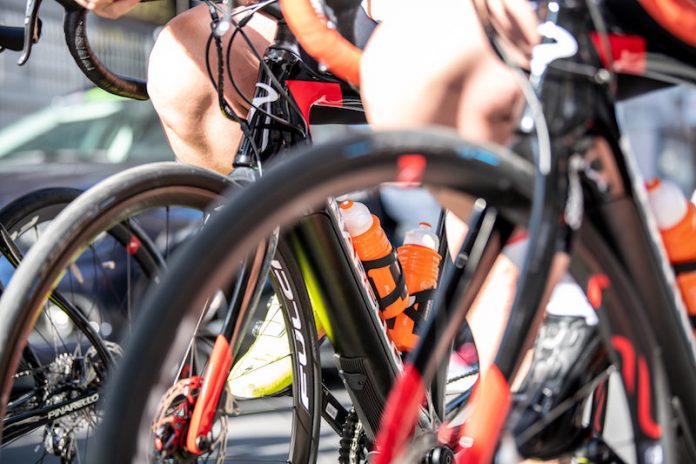
What to drink on a road bike ride? Have you ever wondered? Especially when the physical effort is particularly intense or when it’s very hot, preparing the right drink to take with you in one or more water bottles can make all the difference in terms of performance and well-being during and after your cycling trip.
Water on its own? Here’s why not
Water is the best liquid for hydration and should remain the main source of hydration. However, during physical exertion, in order to maintain optimum hydration, support sports performance and ensure better recovery, water alone may not be enough. This is for at least three reasons:
- Water, being a hypotonic liquid, takes a very short time to assimilate in the intestine, quenching the sensation of thirst quickly but doing so even before optimum water levels have been re-established. In addition, especially low-mineral waters stimulate diuresis, resulting in further loss of fluid.
- Due to the absence of carbohydrates and the inability to adequately replenish the mineral salts lost through sweating, water alone cannot provide energy and stamina during physical effort.
- The ideal drink for physical exertion is one that minimises the amount of liquid remaining in the stomach. To ensure a short transit time in the stomach, it is advisable to add a small amount of diluted mineral salts and carbohydrates to the water.
The ideal drink to take when cycling
The advice is to go out with at least two water bottles. One filled with water, preferably tap water, because it is less diuretic and richer in minerals. The other is filled with water and added supplement so as to have an isotonic drink, capable of being absorbed quickly in the intestine, but just enough to allow greater absorption of the mineral salts lost through sweating. The right supplement also makes it possible, among other things, to add that proportion of carbohydrates which provides energy and speeds up the transit of liquid in the stomach, thus minimising the risk of gastric stress during physical effort.
The ideal drink has a temperature of between 10 and 15°C. Below this temperature there is a risk of congestion, above this the liquid is too hot and does not perform the valuable function of lowering body temperature. A cool liquid helps the body in this function and limits sweating and the resulting loss of minerals and water supplies.
Just as important as the composition of the drink is how it is taken. So it’s not just a question of what to drink when cycling, but also how to drink it. The answer is simple: constantly and in small sips.
Finally, if it’s particularly hot, the advice is to load up on water the day before, taking in water constantly throughout the day, always in small amounts at a time, and foods, such as fruit and vegetables, which are rich in water.
Which supplements in the cyclist’s water bottle?
What to drink during a cycling trip also depends on how long and demanding the trip is, the outside temperature and how hard you want to push yourself that day. There are many variables to consider, but in principle I can give you the following advice:
> Under 2½ hours
In addition to water alone, take a bottle with 30 grams of Isonam Energy for every 500 ml of water, to replenish hydrosaline losses and support your performance with vitamins C and B6, Creapure® creatine and ginseng.
If you want an extra boost, if the outing is particularly demanding, you can also add 30 to 50 grams of Maltonam, with a neutral taste, with maltodextrins of different assimilation for a constant release of energy, and carnitine for greater resistance.
> Over 2½ hours
In addition to water alone, take two flasks, one with 30 grams of Isonam Energy for every 500 ml of water, mixed with a sachet of AMINO(16)PRO, a pool of Ajipure® amino acids and B vitamins, to combat fatigue and support muscular endurance during physical effort.
Prepare the other bottle with 50 grams of Maltonam for every 500 ml of water. Drink a little at a time, every 5 to 10 minutes, constantly alternating between the two flasks.
Why two or more flasks? Even if you only have one canteen with an isotonic drink because your ride is short, you should always carry a canteen with water only. In addition, the bottle cage on your bike cannot hold flasks that are too large, so it is advisable to install at least two, and for longer and more demanding rides, to use a pouch or shoulder bottle cage.






